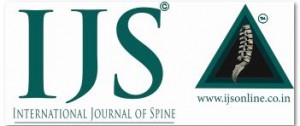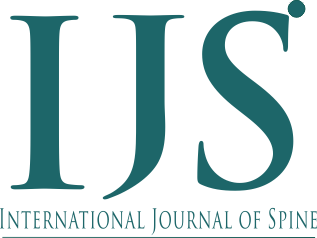Submission Files :
Following files will be essential for the submission of any kind of article
1- Cover letter
2- Title page
3- Blinded manuscript
4- Tables (max. 10, Separately in the Microsoft Word file)
5- Figures (max. 10, Separately in the Microsoft Word file)
6- Copyright form
7- Conflict of Interest form
The details of formatting these files are provided below.
Manuscripts submitted to IJS must be submitted in the format described below. Articles that do not meet the journal’s style will not be peer-reviewed or considered for publication. All articles should be no more than 3500 words long with a maximum of 50 references and 10 figures. Manuscripts should also contain an abstract of up to 350 words. The article will only be accepted for peer review in the following format:
| 1 | 2 |
|
|
|
|
|
|
|
|
|
|
|
|
|
|
|
|
|
|
Conflict of interests :
To be downloaded from the website and a signed copy scanned and submitted along with manuscript
Copyright Form :
[Download Here]
Manuscripts should be submitted in Microsoft Word Document format.
Cover Letter :
This is the official letter written to editors by the author, where they can inform the editorial board about the significance of their study. They can also inform regarding special situations like shared data with another study or long-term follow-up of the already published article. This also provides the chance for authors to interact directly with the editorial board and put up any specific point for considerations like more number of authors, manuscript exceeding word count or figure count.
Title Page :
The title should be concise and informative to make the electronic retrieval of the manuscript both effective and specific. Include important information such as the study design, i.e., clinical or basic, and in particular, indicate if the study is a randomized control trial. A running title not exceeding 35 letters and spaces should be provided.
Example of Title Page
The first page of the manuscript should be a dedicated title page, including the title of the article. The title should include the study design, i.e. Case report. For example
Authors Names should appear in sequence that will be final, with superscript numbers mentioning authors affiliations
Author Name A1, Author Name B2, Author Name C3*
Address: 1 Full designation, degree and postal address of author A;
2 Full designation, degree and postal address of author B;
3 Full designation, degree and postal address of author C.
* Corresponding author should be indicated with an asterisk [*].
The full names, institutional addresses and email addresses for all authors must be included on the title page. No other information should be included on this page.
The page should contain the article title, the full names of the authors including only major qualifications such as M.D. or Ph.D., and the complete postal address of the department and institution where the work was done. Designate one author as a correspondent and supply his or her complete postal address, telephone number, fax number, and e-mail address. If the name or address for offprint requests is different, this should be stated.
Every person listed as an author should have materially participated in the design, execution, and analysis of the study and should verify the accuracy of the entire manuscript before its submission. No more than 6 authors can be included on the title page. Lesser contributors may be noted in an acknowledgment section at the end of the manuscript.
Authorship criteria are as per the ICMJE Guidelines and include Authorship credit should be based only on substantial contributions:
- To conception and design or acquisition of data or analysis and interpretation of data.
- Drafting the article or revising it critically for important intellectual content.
- Participation solely in the acquisition of funding or the collection of data does not justify authorship.
- General supervision of the research group is not sufficient for authorship.
- The order of naming the contributors should be based on the relative contribution of the contributor. Once submitted the order cannot be changed without the written consent of all the contributors.
For an original article the number of contributors should not exceed six; for case reports, letter to the Editor, and review articles, the number of contributors should not exceed four. A justification should be included if the number of contributors exceeds these limits.
Only those who have done substantial work in a particular field can write a review article. A short summary of the work done in the field of review should accompany the manuscript.
Example to state Author’s Contributions
We suggest the following kind of format (please use initials to refer to each author’s contribution,
“FC analyzed and interpreted the patient data regarding the fracture disease and the stiffness. RH performed the histological examination of the callus and was a major contributor in writing the manuscript. All authors read and approved the final manuscript.”
All contributors who do not meet the criteria for authorship should be listed in an acknowledgments section. Examples of those who might be acknowledged include a person who provided purely technical help, writing assistance, or a department chair who provided only general support.
Blinded Submission :
Author information should not be included in the main document. Authors should submit the title page, the main document, and the Pictures separately. To ensure blinding, authors should not include in the abstract or text the name or initials of the authors or the institution at which the study was performed. Refer to your own published work in the third person. Use “In the previous work of Author name et al.”, not “In our previous work.” The blinded manuscript should contain title, abstract, keywords, main article with references, tables and figure legends
Abstract :
This should start on page 2 of the manuscript. The abstract must not exceed 350 words. Do not use abbreviations or references in the abstract. The structured abstract should consist of four paragraphs: Background (including the context and purpose of the research), Methods, Results, and Conclusions. The abstract should be typed on a separate page, and should not include abbreviations, footnotes, or references. The abstract should make clear how the paper adds to the Orthopaedic literature:
Keywords :
Add 3 to 5 keywords at the end of the abstract. MESH terms will be preferable.
Blinded Manuscript :
The length of the text and references should not exceed 15 pages of double-spaced type. The number of figures and tables together should not exceed 20. Do not repeat in the text all data that appear in the tables or illustrations; emphasize or summarize only important observations. A conclusion may be included in the summary paragraph of the Discussion only if it is not redundant.
The blinded manuscript should not contain the names of the author or their institute. References should be numbered in order of appearance and should be placed in square brackets [1]. The manuscript is usually, but not necessarily, divided into sections with the headings Introduction, Materials and Methods, Results, Discussion, and Clinical Relevance. Long articles may need section subheadings to clarify their content.
Introduction :
Should explain the background of the case, including the disorder, usual presentation and progression, and an explanation of the presentation if it is a new disease. If it is a case discussing an adverse drug interaction the introduction should give details of the drug’s common use and any previously reported side effects. It should also include a brief literature review.
Material & Methods :
Should be sufficiently detailed to allow easy understanding and reproduction of the study. Details of study design, outcome measures, outcome assessors, and statistical methods have to be provided here. Surgical technique should be described in detail with photographs and videos [videos should be uploaded on youtube and link to be submitted to us].
Results :
Keep results very succinct and to the point. Write all data in mean ± SD [Range] with appropriate standard units. Mention p values till third decimal points. Use tables to display the numerical data. Do not interpret the results in this section. Provide details of complication events and their individual follow-ups.
Discussion :
Should be elaborate and should focus on the main results of your study. Individual complications should be addressed separately and put in context with the current literature.
Clinical relevance :
Mention it in three or four sentences.


